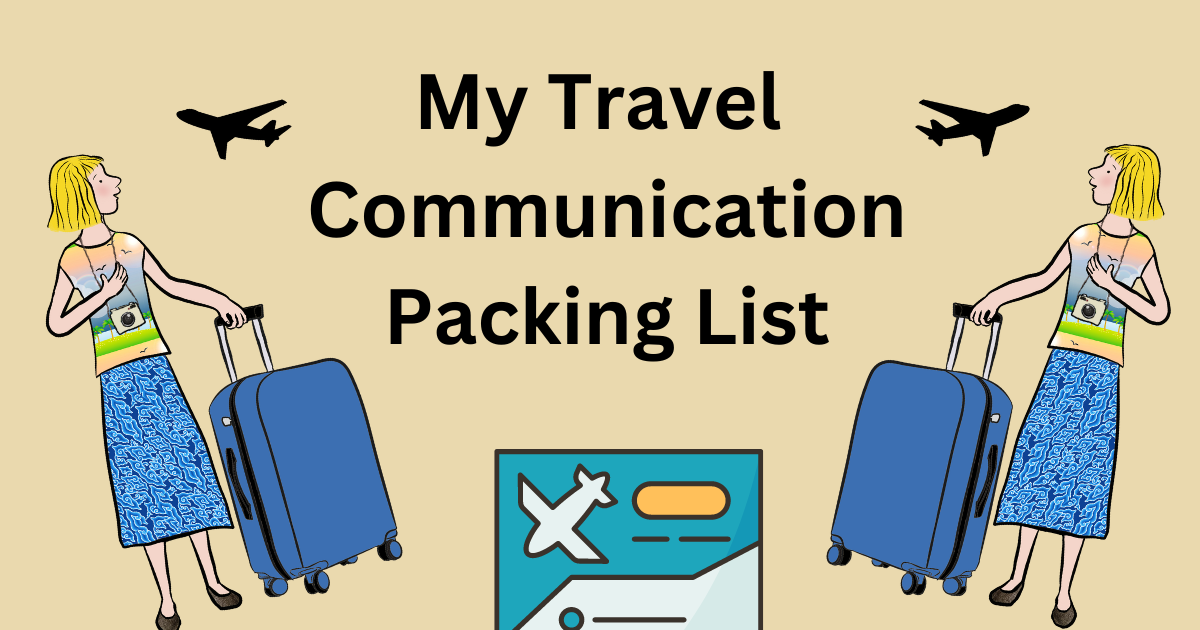I’ll admit it – I’m excited! For most of this month, I will be in Europe (Poland, Germany and France) with girlfriends to celebrate a birthday of significance. And while any big trip requires preparation, there are a few extra things on the packing list for people with hearing loss.
Because I often travel on my own for business, it’s a treat to vacation with friends (or the Hearing Husband who is not invited on this trip) who can help in situations when I don’t hear or understand something. These communication gaps can be stressful for the solo traveler which is what led to my using the airport wheelchair service on a recent trip for the first time, which dealt a light blow to my self-image as a capable traveler who knows how to have her needs met.
The following is my Communication Checklist that, if I stay true to it, will help minimize difficult hearing situations and reduce the chance of irritating the hell out of my girlfriends (see point 4 below).
- Take all necessary hearing technology. Hearing aid. Cochlear implant. Backup hearing aid. Chargers and accoutrements for both. Mini mic for streaming. Cellphone for apps: hearing aid and CI, speech-to-text and translation (see point 5). Charging cords. Bonus: I’m taking my CI mapping from my audiologist, should the unthinkable happen while I’m away.
- Self-identify as having hearing loss to airline staff to navigate boarding and inflight announcements; this is especially important on my solo flights to/from Europe (my friends are traveling from a different Canadian City).
- On all flights, wear earplugs or use noise-cancelling headphones to reduce airplane reverberation which can exacerbate tinnitus.
- Have reasonable expectations of my friends. Their job is not to communicate for me, but to assist me. When I need them to repeat, rephrase, or help me handle difficult listening situations, they will do what they’ve been trained to do. They’re good at it. Even when they are present, however, I will self-identify at hotels, restaurants, on modes of transportation and with tour guides.
- Reduce the ‘burden’ on my friends by using alternative communication strategies. For the first week, one friend and I will be visiting historical sites in Poland and Germany. As I often struggle to understand my native English, I expect difficulties when it’s spoken with Polish and German accents. But I have two strategies for that: my speech-to-text apps and my brilliant speechreading skills.
- Streaming technology. During group tours such as our visit to Auschwitz, the tour guides will wear my mini mic which will stream their voices into my devices. I have the right to ask and to expect cooperation.
- Strategic seating for good sightlines and noise reduction. When we catch up with the rest of the group for a week of touring French wine country, I will sit in the front passenger seat so I can speechread everyone and because I’m the navigator. I need to understand the driver when she yells, where are we supposed to TURN? Then I can quickly respond with, at the exit we just passed!
Don’t you wish you were coming too? Feel free to follow me on Instagram (@gaelkennedyhannan) where I will showcase travel communication in action – there will be high points and low points, but I’m going as prepared as possible!






